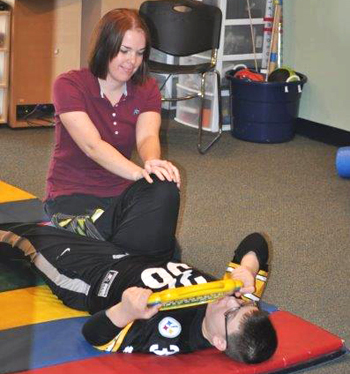
|
Pediatric Occupational, Physical, ABA/Behavioral, Feeding, Speech, and Language Therapies Main Clinic: 931-372-2567 1445 East 10th Street Cookeville, TN 38501 Email: [email protected] HIPAA Secure Email: [email protected] Fax: (931) 372-2572 ABA Clinic: 931-201-9534 400 Dubois Road Cookeville, TN 38501 Email: [email protected] Please call today to get started! Most insurances accepted! |

|
| Who needs therapy? | SE HABLA ESPAÑOL |
Home
>
Therapeutic Listening Program
> Classroon Management Strategies for Children with Auditory Processing Disorders
Classroon Management Strategies for Children with Auditory Processing Disorders
Classroom Management Strategies for
Children with Auditory Processing Disorders
- Seek classroom placement to avoid settings that are noisy or reverberant and avoid open classroom placements; use an FM System from SPED department.
- Provide the child preferential seating near the place where the teacher spends most of his/her time giving auditory instructions, and away from distracting auditory and visual "noise;"
- Teach the child to use visual information (look and listen) and write down steps or use picture systems.
- Encourage teachers to gain the child’s attention before giving auditory instruction; ears are focused where eyes look!
- Check the child’s comprehension of auditory information by asking a child to re-tell the instruction;
- Rephrase and restate important information to provide auditory redundancy; but only after they can't repeat instructions. Give time to process.
- Counsel teachers and parents regarding the child’s auditory needs;
- Teach listening skills, including when to listen for meaning rather than exact repetition. Teach the child to wait until instructions are completed before he/she begins a task;
- Give the child time to think and respond to auditory instructions or questions;
- Use attention devices such as calling the child’s name, vibration attention monitors are great.
- Have them massage and pull on their ears, say things like "listen" and "Are you ready?" before giving assignments;
- Limit the amount of information in each instruction;
- Allow a "buddy system" that the child can use to check homework assignments or other instructions;
- Consider the use of recording on phones for some children who need a repetition of directions, spelling words, or lectures;
- Ask teachers to provide pre-printed lecture notes or outlines to minimize the need to listen and write or take notes. This allows the child to listen while watching the teacher and taking advantage of all visual cues.
Site empowered by
WebOnTheFly